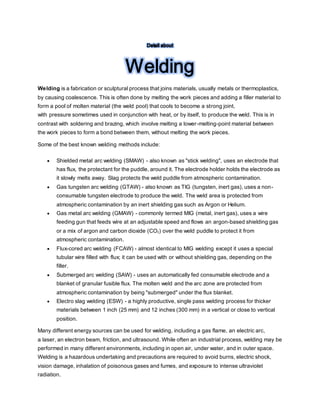Welding is a fabrication process that joins materials by melting them together or through applying pressure. Common welding methods include shielded metal arc welding, gas tungsten arc welding, gas metal arc welding, and flux-cored arc welding. These processes use an electric arc or gas flame to melt metals. Other welding methods include resistance welding, which uses heat from electrical resistance to join metals, and solid-state welding techniques like ultrasonic and friction welding that join materials without melting them. Welding is widely used in industrial and manufacturing settings.






